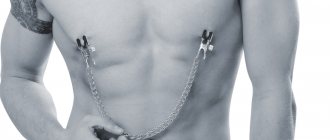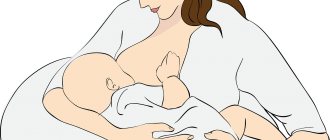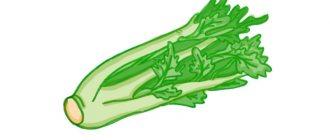Often in the canopy booths they preach to the newborns with sumishes. Chi varto ce robiti?
It’s a pity that the agreement that goes wrong in the canopy booths is often without support. So, in truth, in the first days after birth, the mother has no milk, otherwise we cannot have any.
Over the course of 2-5 days (depending on whether the vaginal canopy or Caesarean rose) colostrum appears from the milk ducts, which is essential for the newborn. A baby bottle with a volume of 5-7 ml and a few drops of colostrum is completely sufficient, and it is also high-calorie (1500 kcal) and will meet the energy needs of the baby throughout the first part of life, without affecting the body.
When a baby spends time near a vase in a canopy booth, is it bad?
The baby can spend your time after the birth.
This is a natural process. The permissible physiological waste is 7-10% of the total amount during pregnancy. Remember, the maximum is 3-4 years of life. If the waste is more than 10%, be sure to look at whether breastfeeding is properly organized, so that the baby is applied to the breasts, the effectiveness of application and the frequency of application. After the meal is taken away, the baby begins to gain vagus.
It is possible to recommend supplementary feeding if changes are not required.
It’s important that WHO, when you need an agreement, will first use your mother’s milk, then donated milk, and then sumish.
Everyone has lactostasis, so can it be avoided?
Unfortunately, during the current period of breastfeeding, lactostasis may cause problems with the skin of a woman. Of course, it can be caused by known reasons that can provoke a hardened mammary tract. Cause lactostasis:
- It’s not enough for my mother to get used to her homeland;
- incorrect application of baby to the breasts;
- Poor selection of bra size;
- pressing the milky veins with a tight or unbreakable garment;
- improper pain management;
- soaked one breast;
- vikoristannya pacifier, fool;
- the child can hit or pinch her mother;
- sleeping on the stomach in the first months after bed;
- blockage of the duct - this is the name of the “white mark” on the nipple;
- Mom's experiences and stress;
- vidma's child in front of the breasts;
- incorrectly selected milk dispenser.
When the milk “comes in,” the breasts become hot and hard. This is not lactostasis, but so-called “plugging” of the breasts. And this is a variant of the norm.
When the breasts are full, milk flows better. The women of Varto often groom the child so that she can spore the milk vine well. In 2-3 days, the breasts begin to sound until the baby needs them.
When engorged - the breasts are swollen, painful, the milk flows poorly, the temperature may rise, it is important for the baby to suck on the nipple. In this type of episode, it is best to use a healthy diet. It’s better to call for help from a specialist who can show you what to do.
It is easier to prevent engorgement, because then more serious complications are possible.
For this purpose, the mother needs to start breastfeeding the baby immediately after the curtains, make sure that the application is correct and do not separate the baby from being wet or wet.

Problems with milk supply.
If it seems to you that there is not enough milk, switch to an increased drinking regime. Drinking too much will inevitably lead to an increase in the amount of milk in the breast.
If there is little milk, eliminate pacifiers and put the baby to the breast more often. Sucking the nipple is a powerful stimulator of lactation. During this period of time, the optimal regimen for you will be feeding on demand, the more often the better. In the future, I would recommend striving for a free feeding regime, where the intervals between breastfeeding are at least 2 hours.

If there is too much milk and your breasts become painfully full, you can use a breast pump until you feel relief. The same effect can be achieved by hand expressing, but this is a more unpleasant and painful process that I would not recommend to anyone.
How can mom know that everything is okay?
- How long have newborns been guilty of smoktati breasts?
The duration may vary: from 5 hvilins to 1.5 - 2 years. There is no norm for singing, the hour of soaking is determined by the child. For a newborn, the mother is the whole world! For the new year, breastfeeding is not just a hedgehog, but calmness, sleeping with mom, going to bed and feeling safe.
- Why change breasts in one application?
Please, it is enough to cover your breasts for 1.5-2 years. If the baby is born with one breast, at the age of one year, you can give birth to the other one.
This method is also used to increase the strength of milk.
- How long does it take for a newborn to give birth without the mother complaining that she doesn’t produce milk?
Before the child reaches 10 days, the amount of semen discharge is due to the same number of days as the child. And after 10 days - no less than 10-12.
- Who is to blame for gaining vagina in a newborn?
Today, 149 by order of the Ministry of Health of Ukraine, the minimum intake for a child is expected to be 500g.
Nipple covers, if they are lined with vikoristan?
You can also now find a nipple shape corrector on sale - is it necessary or not necessary?
Research that shows the success of using linings in a sparing bath for older groups of children:
- the child sunbathes or loses her tongue during the bath;
- the baby has problems with the development of the central nervous system, has little or no problems with breastfeeding and placing them in the mouth;
- for premature babies;
- for “flat” nipples in the mother, to stretch the nipples when they are wet.
A nipple shape corrector may come in handy, since a woman has so-called “flat” or “retracted” nipples and in the general position for giving birth, it is not possible to attach the baby correctly.
This type of nipple mold can be made independently.
Consultants know a lot of life hacks.
I mean that the tightening of nipple shields and nipple shape correctors is time-consuming.
Often, pads are recommended without any doubt, but it is difficult to treat a child with them.

Parts of feeding new mothers when applying the baby up to the breasts
- Trim the child by the head at the hour of the anniversary;
- Apply the baby, turning it up to its chest and head;
- Davati smoktati baby without a nipple, without an areola;
- Be patient for an hour;
- When taking a bath, press your breasts together, so as not to close your nose;
- Give the child's breasts without caking, and open her mouth wide;
- “Stuff” the nipple into the child’s mouth.
Too much milk, not enough milk - what factors come into play and how can you increase the amount of milk to help with milk during meals?
If you have too much milk - this is what is called “hyperlactation” - you can be careful because:
- mother often changes breasts;
- є extraction of breast milk after birth;
- Mom has a history of illness (for example, thyroid disease);
- The woman is taking medications that may have such a side effect.
The situation, if there is “little milk,” often arises because:
- incorrect application;
- mother breastfeeds her baby rarely (less than 8 times per child);
- year by year;
- There are no early years, especially between 4-8 years of age;
- the child was not pressed to the breasts for the first few years after the curtains;
- The baby removes the cream of breast milk from both food and drink;
- praise and inability of mother, often severe stress.
The thickness of milk can be increased by partial and correct application, in which the child can effectively moisten the milk. It is good to use herbs and herbs that promote increased lactation, but not a wonderful benefit and should be used with care.

And opponents of children with breastfeeding insist that the mother’s food does not pour into milk. How do you care and what are you going to do about it?
I, perhaps, will wait until the “unfriendly” children. The mother’s food does not flow into the storage of breast milk, but it does not go away. Mom has a sufficiently balanced diet.
Nature has planned it wisely: since the mother’s diet does not include smelly products, then all the smells from the reserves of the female body are absorbed into the milk.
Children should be fully nursed for the first 2-3 years until they can enjoy the work of the woman’s herbal system after bed. Then the food can be the same as during the hour of pregnancy. The child got to know the little grubs in his tummy. Apply the new product to the skin for a small amount in the first half of the day, keeping an eye on the child’s reaction.
Avoid unnecessary products: with barberries, stabilizers, and stinks that penetrate the blood and, apparently, breast milk (which is excreted from the blood and lymph). And also products, after adoption by the mother, may be unacceptable (for example, bloating, baking).
Dairy products, including cow's milk protein, can be easily digested. I want fermented milk products that are more suitable for a mother-year-old mother’s food.
Please remember about the peculiarities of the skin and the possibility of allergic reactions.
Photo: shutterstock
A unique gift of nature
Breast milk is the best thing a mother can give to her baby. No artificial mixtures can replace it. It contains not only proteins that a newborn can easily digest, the fats and carbohydrates it needs, but also hormones, vitamins, antibodies that protect against diseases; enzymes that form the intestines, as well as substances that regulate the baby’s nervous system and improve his psycho-emotional state...
At one time, doctors in developed countries believed that artificial formula could easily replace breast milk. But recent studies have shown that the health of “artificial children” is less good than those children who grew up on their mother’s milk. It turned out that in order for the baby to get sick less, not suffer from colic in the stomach, begin to walk and talk faster, and even study better in the future, it is very important for him to eat his mother’s milk for the first year. A matter of technology
What you need to have a lot of milk:
Motivation. A woman must be sure that she needs to breastfeed her baby and that she can do it. This confidence alone gives a rush of milk.
To the chest - from the first minutes. After childbirth, the level of prolactin, a hormone that is responsible for the flow of milk, increases in a woman’s body. All milk production mechanisms will work clearly if the baby touches the mother’s breast immediately after birth. Unfortunately, in many maternity hospitals, babies are kept separate from their mothers in the old fashioned way. Sometimes this is explained by the fact that the mother had a difficult birth and needs to rest. But this is not true. Nature, taking care of the child, arranged it in such a way that as soon as he touches the mother’s breast, she not only has milk, but also the strength to take care of the baby. When signing an agreement with the maternity hospital, negotiate the condition that immediately after birth the baby will be put to your breast and you will lie in the same room with him.
Apply correctly:
– The baby’s belly should be turned towards the mother’s belly.
– His head should be in line with his neck. This position facilitates the process of milk entering the intestines.
– The baby’s mouth is near the nipple, then, sensing the smell of milk, he will open it wide. The opening angle must be greater than 90 degrees. The lower lip is turned out, the chin touches the chest.
– Place the nipple in the baby’s mouth so that only the upper part of the areola is visible to you, the lower part is all in the baby’s mouth.
Check the effectiveness of sucking by the following signs:
- The baby's cheeks do not sag or retract.
- You can hear milk flowing down his neck.
- Sucks slowly. At this rate, hind milk is sucked out and new milk is intensively poured in in return.
Feed at night. Night is the time for the production of prolactin. The more often in the first month of his life the baby sucks breast milk at night, the more of it the mother will have. And you don’t have to be afraid that mom won’t get enough sleep. Everything is hormonally determined so that a woman is not tired after endless night breastfeeding. But a mother who feeds her baby formula 2-4 times a night can barely stand on her feet in the morning.
Create a feeding regimen together, and do not impose it on the child. In the first days, the baby only needs a few drops of milk at each meal. But you need to feed him as many times as he wants. And so on for the whole month. And then the child himself will tell you the rhythm: after 2.5 hours or after 3... He can eat in the morning after 2 hours 45 minutes, and in the evening after 3. And this is not random feeding! This is a routine that the baby and mother have developed together. Don't be afraid of days when milk is low. Doctors call them hypolactic crises. They appear by the second month and are associated with hormonal changes. These are harbingers of future menstruation. On such a day, the mother may have little milk. Or the baby won't like it too much. You shouldn’t be scared, don’t run to the store for formula, and put your baby to your breast more often. The next day the milk will be restored. Do not give water or feed prematurely. Breastfed babies do not need water for the first three months. They get enough liquid from their mother's milk. And, according to WHO recommendations, complementary feeding is not necessary until 6 months (only if the baby is gaining little weight or receives mixed nutrition, complementary feeding begins at 4 months). But after six months you can very quickly expand the range of complementary foods without fear of allergic skin manifestations and abdominal pain. Up to 4 months there is no need to give a pacifier or pacifier. The mechanism of sucking the nipple and breast is different, it is difficult for the baby to adapt, he begins to suck the breast less effectively.










